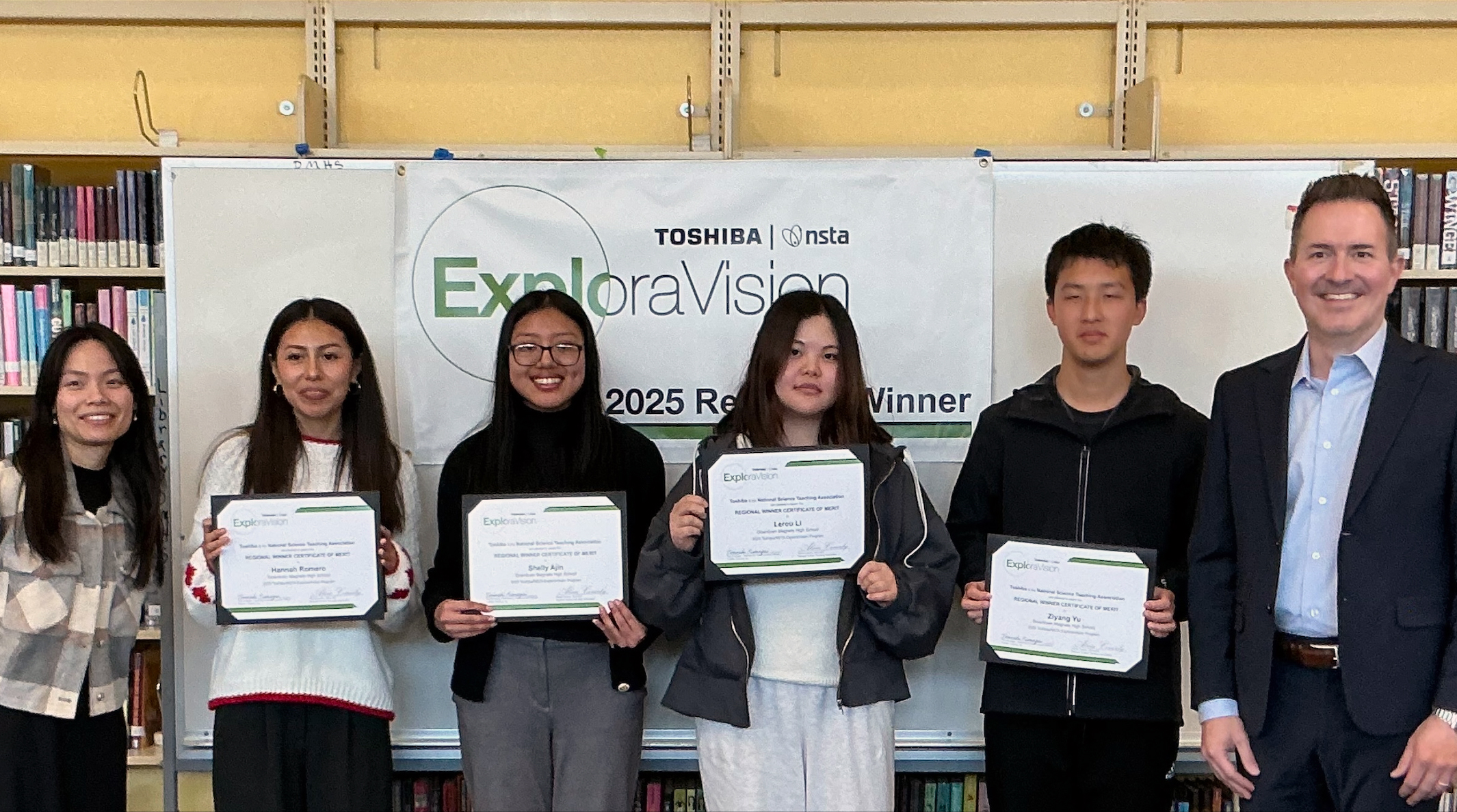We created a device which allows for the detection and prevention of seizures. Using various sensors and a AI machine learning program, we aim to forecast seizures before they occur and provide treatment right when the seizure occurs through the usage of vagus nerve stimulation. We utilize many forms of data including previous EEG data from patients to provide accurate seizure forecasts. Seizor is a hybrid device, consisting of a earpeice (tVNS) and a wristwatch with a bluetooth feature that allows for automatic exchange of information. Seizor aims to increase independence for those with seizures and improve their quality of life.
ExploraVison National Science Competition Winners
1st place

Mentor Sarah Torrie, Krishnapriya Nagasubramanian, Cynthia Li, Coach Stacy Batras
Seizor
2nd place

Coach Vy Le, Hannah Romero, Shelley Ajin, Lerou Li, Ziyang Deng, Joe Cockman, Toshiba,
Nano Artertract Plaque Seeker (NAPS)
Coronary artery disease (CAD) affects over 20 million U.S. adults and causes over 350,000 deaths annually. CAD is caused by plaque buildup that narrows arteries and reduces blood flow, which could lead to heart attacks and potential heart failure. The NAPS (Nano Artertract Plaque Seeker) is a new intravenous drug designed to target plaque-causing macrophages using iron oxide nanoparticles for precise drug delivery via a magnetic field. With NAPS, CAD patients will experience fewer heart complications and live a better life.